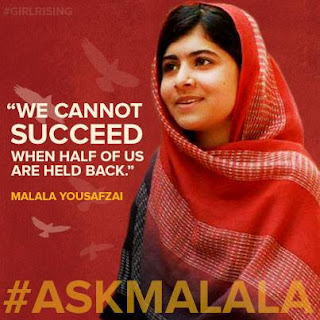Kathryn Teneese, the Chair of the Ktunaxa Nation Council,
in British Columbia, spoke at a gathering in the Columbia River Basin where she
shared some of her ideas on reconciliation.
She said,
 |
| Chief Kathryn Teneese |
"Each and every one of us can do something about that. We
can make the case and say to the people sitting in those positions of power:
‘That is unacceptable. You cannot
continue to do that on my behalf.’"
"I think one needs to find ways, small ways, the baby
steps, because we didn’t get to the relationship we have here overnight. We need to find the way that we can do things
together that makes sense."
Quoted in John Ralston Saul (2014) The Comeback. Toronto: Penguin Books pp 259 – 262.
Groundwork
for Change
 |
| Monique Woroniak |
Groundwork for Change has articles, videos, maps and links to help non-indigenous people learn about First Nations history, treaties, residential schools, the Sixties Scoop and language from indigenous perspectives. Woroniak says, “I think these are Canadian issues – these issues belong to all of us.”
 |
| Michael Redhead Champagne |
Champagne goes on to say, “I think it’s important for
indigenous and non-indigenous folks to be working together because we all share
the same water, the same air, the same space and right now in Winnipeg I feel
like people are looking for solutions.”
The Groundwork for Change website has a wealth of links that can be
followed. It is encouraging and
inspiring to see the great work that many people are doing and one could spend
hours reading. You are not likely to encounter most of this on the evening news but there are good stories being told here.
RAVEN
stands for Respecting Aboriginal Values and Environmental Needs. This seven-year-old organization based in
Victoria, BC has a vision of a “country that embraces the ancestral laws of
Indigenous Peoples and their equitable access to the justice system within a
thriving natural habitat.” RAVEN Trust’s
mission is “to raise legal defense funds to assist First Nations who enforce
their rights and title to protect traditional territories.”
Last year RAVEN raised nearly one million dollars to
support strategic legal challenges that tackle major environmental issues such
as the Site C dam, the Tar Sands, the Northern Gateway Pipeline, the Prince
Rupert Gas Transmission Project and the New Prosperity Mine Project. As the First Nations carry out these legal
battles they are protecting lakes, river valleys and diverse ecosystems for all
Canadians.
RAVEN feels that “Indigenous Peoples’ rights and titles are among the most powerful forces for environmental protection in Canada.” These legal challenges are long and expensive especially when their opponents have very deep pockets. By partnering with these First Nations, non-indigenous people stand with the indigenous communities and can work towards protecting sustainable ecosystems for all life. This seems to me, to echo Kathryn Teneese’s call to find ways we can work together that makes sense and Michael Champagne’s words that we all share the same water and the same air.
Soccer
Team Heading for Attawapiskat
After learning about the high number (50) of attempted
suicides in the community of Attawapiskat this year, the members of the boys soccer
team at Bishop Marrocco/Thomas Merton CSS in Toronto decided to travel there
this summer for a week. They say that they use soccer as an outlet and a
motivator and they want to share this with the youth in the remote community.
 |
| Bishop Marrocco/Thomas Merton Boys Soccer Team |
The students want
to bring soccer supplies and run a soccer training camp for the youth in
Attawapiskat. The Toronto teens are
raising money for their trip on a crowd funding site set up by their teacher, which includes a description of their project. The team plans to sleep in the same gym in
which the camp will take place as the community is already overcrowded. The project has been developed in conjunction
with Attawapiskat’s recreation coordinator.
The Toronto students are hoping to make many such trips and hope to host kids from Attawapiskat as well. They want to offer support, learn from each other and build bridges with their northern neighbours. You can read more at cbc.ca.
The Toronto students are hoping to make many such trips and hope to host kids from Attawapiskat as well. They want to offer support, learn from each other and build bridges with their northern neighbours. You can read more at cbc.ca.
Stories of reconciliation are emerging all over
Canada. These new narratives are
starting from the place of acknowledgement and recognition, from listening and
learning and then finding a new way forward together that respects all of life. This is our new story.















